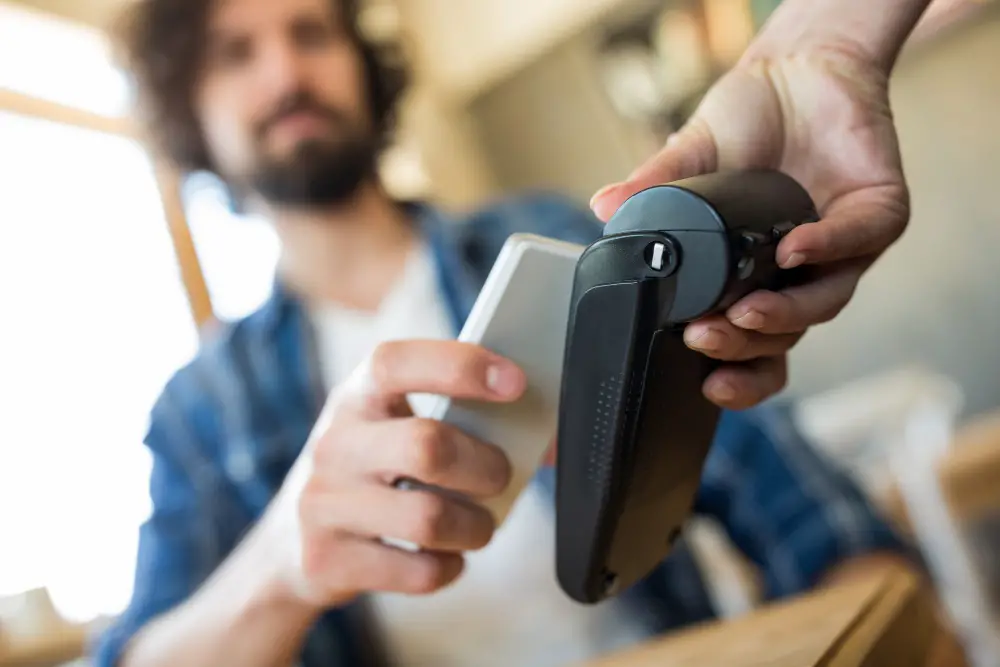In today’s fast-paced digital age, Near Field Communication (NFC) has emerged as a game-changer, revolutionizing how we interact with technology daily. This small yet powerful technology enables seamless communication between devices, making tasks simpler, faster, and more efficient. In this article, we’ll explore how NFC has changed our lives, its various applications, and its impact on different sectors.
What is NFC?
Near Field Communication (NFC) is a short-range wireless communication technology that allows two devices to exchange information when they are in close proximity, typically within a few centimeters. Unlike Bluetooth, NFC does not require pairing or manual configurations, making it incredibly user-friendly and accessible.
NFC in Everyday Life
1. Contactless Payments
One of the most prominent uses of NFC is in contactless payments. With the rise of digital wallets like Apple Pay, Google Wallet, and Samsung Pay, NFC-enabled smartphones have transformed how we pay for goods and services. Simply tap your phone on a compatible terminal, and the transaction is complete—no need for cash or cards. This not only speeds up the checkout process but also enhances security by reducing physical contact and potential fraud.
Read also: How to Choose the Best Payment Processor for Your Business
2. Public Transportation
In many cities worldwide, NFC has revolutionized public transportation. Commuters can use NFC-enabled cards or smartphones to pay for bus, train, and subway rides. For example, London’s Oyster card and New York City’s OMNY system utilize NFC technology to offer a seamless and efficient travel experience, reducing the hassle of purchasing tickets and waiting in lines.
3. Access Control and Security
NFC has significantly improved security and access control in both personal and professional settings. Keyless entry systems for homes, hotels, and offices use NFC-enabled cards or smartphones to grant access, eliminating the need for traditional keys and enhancing security. Additionally, NFC tags can store personal identification information, making it easier to manage access credentials and visitor logs.
NFC in Business and Marketing
1. Enhanced Customer Engagement
Businesses are leveraging NFC to enhance customer engagement and provide a personalized experience. NFC tags embedded in products, posters, or brochures can direct customers to websites, promotional content, or special offers with a simple tap. For example, a tap on an NFC-enabled poster might lead to a website with exclusive video content or a discount coupon, enriching the customer’s interaction with the brand.
2. Inventory and Asset Management
NFC tags are also used in inventory and asset management. By attaching NFC tags to products, businesses can streamline inventory tracking, ensuring real-time updates and reducing errors. This application is particularly useful in retail, manufacturing, and logistics, where efficient inventory management is crucial.
NFC in Healthcare
NFC technology is making significant strides in the healthcare sector. It enhances patient care by enabling quick access to medical records through NFC-enabled wristbands or cards. Healthcare providers can instantly retrieve patient information, improving accuracy and response times during emergencies. Additionally, NFC can be used in medication management systems to ensure patients receive the correct prescriptions and dosages.
The Future of NFC
The future of NFC looks promising as it continues to integrate with emerging technologies. With the growth of the Internet of Things (IoT), NFC will likely play a crucial role in connecting and controlling smart devices. Innovations such as NFC-enabled wearables, enhanced payment solutions, and advanced security measures are just the beginning.
Disclosure: As an Amazon Associate, we earn from qualifying purchases. When you purchase through links on our site, we may earn an affiliate commission at no extra cost to you.
Frequently Asked Questions (FAQs)
1) How does NFC affect modern society?
NFC (Near Field Communication) affects modern society by enhancing convenience, efficiency, and security in various aspects of daily life. It simplifies payment processes through contactless transactions, speeds up access to public transportation, and improves security in residential and commercial settings with keyless entry systems. In healthcare, NFC ensures quick access to medical records and accurate medication management. Additionally, businesses use NFC to engage customers through interactive marketing and streamline inventory management. Overall, NFC technology seamlessly integrates with our daily routines, making tasks faster and more efficient.
2) What are the real-life applications of NFC?
Real-life applications of NFC include:
- Contactless Payments: Using digital wallets like Apple Pay, Google Wallet, and Samsung Pay to make transactions by tapping a smartphone on a payment terminal.
- Public Transportation: Paying for bus, train, and subway rides with NFC-enabled cards or smartphones, as seen in systems like London’s Oyster card and New York City’s OMNY.
- Access Control: Using NFC-enabled devices for keyless entry in homes, offices, and hotels, enhancing security and convenience.
- Customer Engagement: Businesses using NFC tags in products, posters, and brochures to direct customers to promotional content or special offers.
- Inventory Management: Attaching NFC tags to products for efficient tracking and management in retail, manufacturing, and logistics.
- Healthcare: Accessing patient medical records quickly and accurately using NFC-enabled wristbands or cards, and managing medication with NFC technology.
3) What are the benefits of NFC?
The benefits of NFC include:
- Convenience: Simplifies tasks such as payments and access control with a quick tap of a smartphone or card.
- Speed: Accelerates transactions and access, reducing waiting times and improving efficiency.
- Security: Enhances security through encrypted communication and reducing the need for physical keys and cards, lowering the risk of theft and fraud.
- Versatility: Supports a wide range of applications across different sectors, from retail and transportation to healthcare and marketing.
- User-Friendly: Requires no pairing or complex setup, making it easy for anyone to use.
4) How is NFC technology different from other technologies?
NFC technology differs from other technologies in several ways:
- Range: NFC operates over very short distances (typically a few centimeters), ensuring secure and intentional interactions, unlike Bluetooth which has a wider range.
- Setup: Unlike Bluetooth, which requires pairing, NFC works instantly without any manual configuration, providing a seamless user experience.
- Power Consumption: NFC consumes less power compared to Bluetooth, making it suitable for devices with limited battery life.
- Specific Use Cases: While Bluetooth is used for continuous data exchange over longer distances, NFC is designed for quick, secure transactions and interactions, such as payments and access control.
- Security: NFC’s short-range communication reduces the risk of interception, making it more secure for sensitive operations like financial transactions and access control.
Conclusion
NFC has undoubtedly changed our lives by making everyday tasks more convenient and efficient. From simplifying payments and improving public transportation to enhancing security and revolutionizing healthcare, NFC’s impact is vast and varied. As technology continues to evolve, NFC will likely play an even more integral role in our digital interactions, driving further innovation and convenience.
By understanding and embracing NFC technology, we can look forward to a future where our devices work seamlessly together, making our lives easier and more connected.


